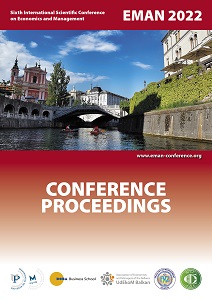Digitalna transformacija špediterskog i carinskog poslovanja tokom pandemije COVID-19
Digital Transformation of Shipping and Customs Business during the COVID-19 Pandemic
Author(s): Marija Marčetić, Bojan Kocić, Nikola Vasić, Gordana Prlinčević
Subject(s): Social Sciences, Economy
Published by: Udruženje ekonomista i menadžera Balkana
Keywords: Shipping; E-customs; Logistics; Digitalization; FIATA
Summary/Abstract: The freight-forwarding market is at a tipping point because of the pandemic which dictates a new narrative in business with the changes companies have gone through in all sectors. Covid-19 initiated freight-forwarding, logisticians and customs officers to re-assess their strategy and realization of supply chains in line with new technology and digitalization. Introducing digital solutions will be the focus of every part of the supply chain as it will increase the quality of their services and so secure an adequate level of competitiveness in the market. Digital trends surpass traditional business with ease in hopes of clearing existing logistical bottlenecks. Automation of business services, various applications and platforms offers value to all participants in logistical achievements by decreasing cost. One benefit is the personalization of logistical and freight-forwarding services through the creation and processing of data. This work considers how customs officers and forwarders tackle digital transformation. Digital transformation in the freight-forwarding branch occurs on three levels. The first level is the new digital strategy of the FIATA freight-forwarding association for creating individual electronic documents. The second level encompasses different initiatives (IATA One Record, FEDeRATED, FENIKS, or IPCSA NoTN) to further connect existing systems, allowing supply chain participants to exchange information and still maintain control over their information. The third level represents the digitalization of the freight-forwarding companies themselves by introducing new software solutions. Customs systems advance at their own pace towards digitalization. Accessible, safe, integrated, interoperable electronic customs systems have eased electronic customs formalities to ease logistics in the supply chain when moving goods into/out of the EU. Compatible IT customs systems are built following international standards in terms of data sets which allows interaction with customs systems between countries.
Book: EMAN 2022 / 6 – Economics & Management: How to Cope with Disrupted Times - CONFERENCE PROCEEDINGS
- Page Range: 213-218
- Page Count: 6
- Publication Year: 2022
- Language: Serbian
- Content File-PDF

